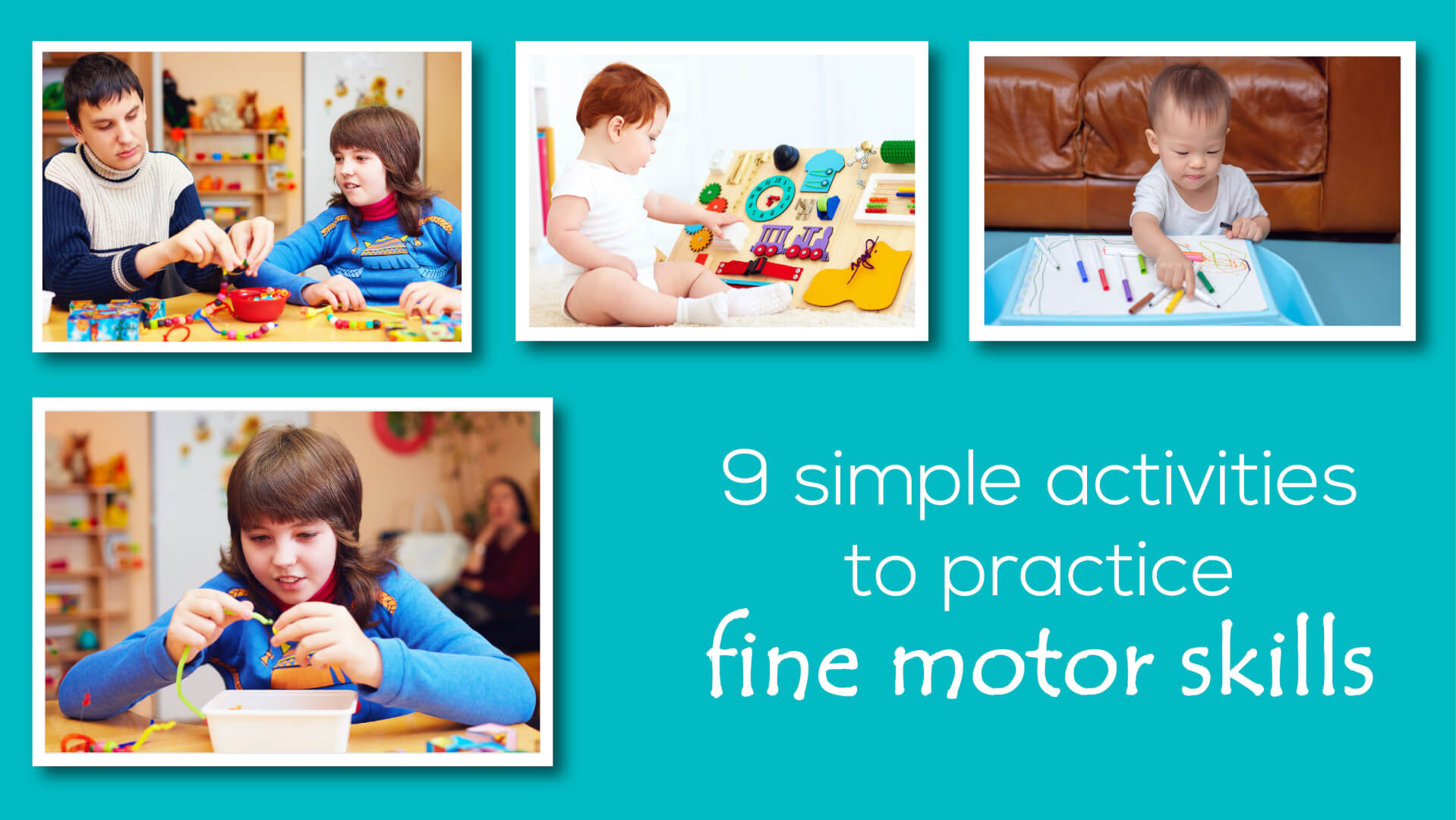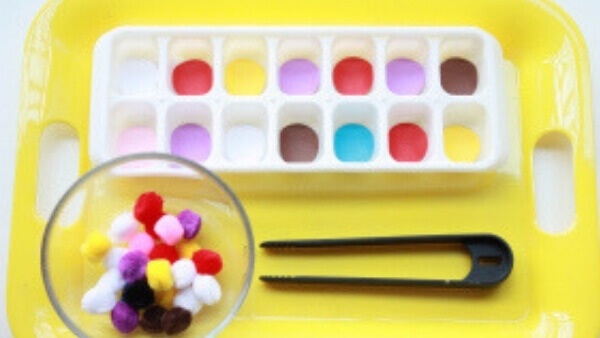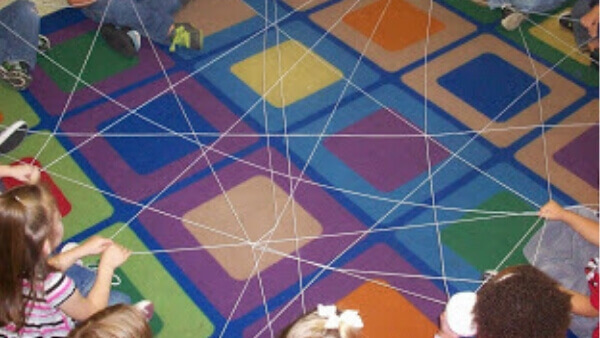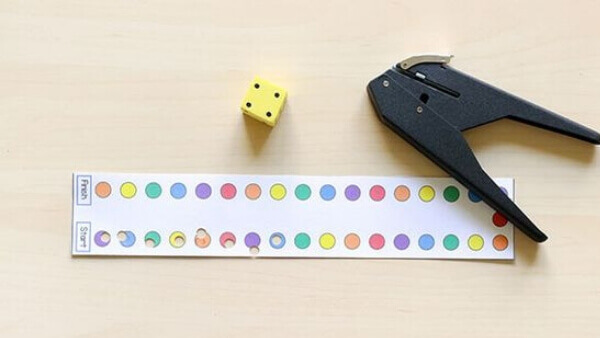9 activities to help your child develop fine motor skills

Introduction:
Many of your child’s daily activities like getting dressed, eating, or writing requires control of small muscles in the hands. We call these as fine motor skills. Your child can do more things for himself when he has opportunities to practice these skills. There are a lot of activities that can increase muscle strength and coordination. These activities can prepare them for more advanced skills, such as writing with a pencil, using a computer mouse, or playing a musical instrument. Help your child, build fine motor skills at home by providing opportunities through these fun activities.
Simple activities to teach fine motor skills to children:

1. Alphabet lacing beads:
Alphabet beads are giant alphabet beads which are big and chunky, so they are perfect for young preschoolers to lace. They make it easy for children to engage with the alphabet while also developing fine motor skills. They can be used to practice spelling names, learn letters and sounds, build sight words and more.
2. Pom-poms and an Ice cube tray:

This activity requires children to simply put a bunch of craft pom poms on the table with an ice cube tray. Then add some tools like tweezers or clothespins. Children will use the fine motor tools to pick up the pom-poms and place them in the tray. This is easily one of the favorite activities for preschoolers.
3. Spider web game:

Children grab a small basket, weave some yarn through to make a “web” and add some spider rings to the bottom. Then give children tweezers or clothespins and let them get the spiders out of the web. Use more or less yarn depending on the number of kids. The more yarn you weave around the basket, the more challenging the activity will be. Keep tossing the yarn form one person to another till they get bored. If your kids are older and still need fine motor practice, this game is highly recommended.
4. Getting ready to play gumball grab:

Kids love practicing any skill when you turn it into a game. Getting ready to write gumball grab does just that and in a super fun way. Kids absolutely love this game and have no clue how much fine motor practice they are getting at the same time. Kids grip the tweezer tongs that come with the game like they would hold a pencil, so it is awesome for developing the fine motor skills necessary for writing. This is just one of the many wonderful tools and activities that help promote fine motor skills in a fun and engaging way.
5. Hole punch game:

The hole punch strips develop fine motor skills and math skills. Children roll dice and punch that many holes on the strip. The one who completes in minimum time wins.
6. Clothesline:

Children use their muscles to squeeze the pins to clip each piece of clothing to the clothesline. You need to tie a piece of thick string on the handles of a wooden tray to make the clothesline and use mini clothespins (although the regular sized clothespins can be used as well).
7. Clothespins on a box:
Children squeeze the clothespins and clip them to the sides of the box. To make the activity more interesting, you can write letters on dot stickers and place the dot stickers around the sides of the boxes. You can even write letters on the clothespins so the children would match the letters on the clothespins to the letters on the boxes. This is similar to the activity where children clip clothespins to a paper plate or cardstock circle; however, those are flimsy and awkward to use, which is why the box is better. Any sturdy box could be used (shoe box, postal box).
8. Sewing/lacing cards:

These cards can be purchased or made with poster board and a hole puncher. Use shoelaces or plastic lacing. Tie one end of the lace to one hole of the card. Children then lace the string through each hole. These can be made for different themes, celebrate festivals.
9. Bean gluing:

Children draw a simple picture on a piece of construction paper with a pencil. They trace the pencil lines with glue and stick the beans on the design. Gripping the beans with their fingers is a good practice to develop fine motor skills.
Get creative with teaching fine motor skills:
1. Teach the pincer grasp:
To help your child learn to pick up small items like Cheerios using her thumb and forefinger, stuff an empty baby-wipe container with scarves, and then let her try to pull them out. You can also give her toys that have dials, switches, and knobs.
2. Appreciate your child’s obsession to mess up:
Your toddler will likely load every toy possible into a plastic bin only to spill it out and start over. While this activity may seem dull, it develops muscle movements, focus, and cognitive reasoning. Other ways to boost grip and finger strength are squeezing a wet sponge or looking for toys that are buried in the sand.
3. Let the stacking begin:
Your child needs hand and wrist stability to place blocks properly. Start with the large wooden blocks as they are easier for toddlers to manipulate. Once she gets the hang of it, you can switch to smaller building materials but hold off on interlocking bricks until your child is at least two years old.
4. Build on basic skills:
As your toddler’s dexterity improves, encourage him to use both hands to do new tasks. Motivate them to try threading big beads with yarn. You can play games like “The Itsy-Bitsy Spider” to teach them how to work with both their hands in tandem.
How to encourage your child’s creativity?

Stand back and let your child explore, even if things are likely to get messed up. Preschoolers tend to focus more on process than on product. They throw themselves into exploring the properties and possibilities of materials like paint, mud, sand, water, and glue without worrying about the results. In fact, when your child proudly displays his latest masterpiece, you should try not to ask, “What is it?” as this question may discourage him. Instead, admire the work for what it is and provide positive reinforcements. Then, encourage him to explain to you in his own words how he felt and what he was thinking about while he was making it.
The less control you try to impose over your child’s creativity, the better it is for them. One of the milestones of this age is becoming right-handed or left-handed. In fact, handedness is an important sign of increasing brain organization. By age 4, some 90 percent of children have become clearly right-handed, while the rest have become dedicated southpaws.
The main determinant of handedness is heredity, so it is best not to tamper with your child’s genetic predisposition. Left-hand people are no less socially acceptable than right-handed people. And when pressure from parents or preschool teachers induces a child to switch, doing so usually takes a long-term toll on your child’s development.
Conclusion:
Every child has its own timeline to reach a milestone. Introducing them to these activities will help them develop their motor skills faster and thus they would be prepared for further challenges, the future holds for them.




